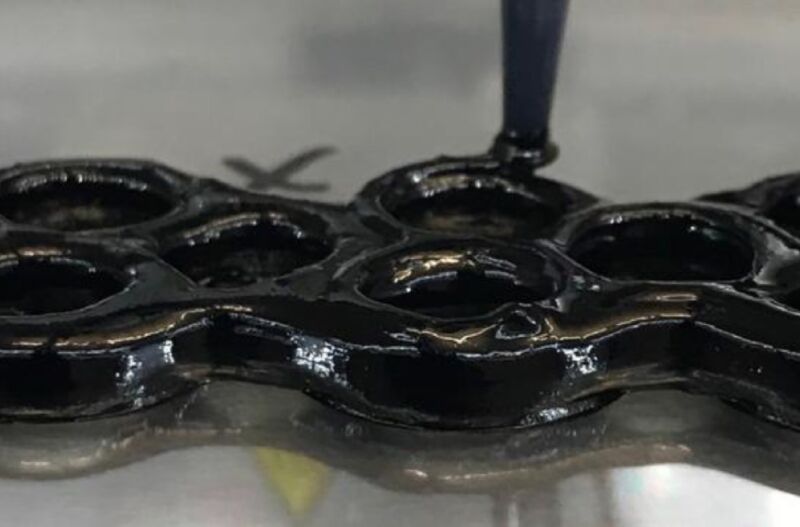This stretchy electronic material hardens upon impact just like “oobleck”

Enlarge / This flexible and conductive material has adaptive durability," meaning it gets stronger when hit. (credit: Yue (Jessica) Wang)
Scientists are keen to develop new materials for lightweight, flexible, and affordable wearable electronics so that, one day, dropping our smartphones won't result in irreparable damage. One team at the University of California, Merced, has made conductive polymer films that actually toughen up in response to impact rather than breaking apart, much like mixing corn starch and water in appropriate amounts produces a slurry that is liquid when stirred slowly but hardens when you punch it (i.e., "oobleck"). They described their work in a talk at this week's meeting of the American Chemical Society in New Orleans.
"Polymer-based electronics are very promising," said Di Wu, a postdoc in materials science at UCM. "We want to make the polymer electronics lighter, cheaper, and smarter. [With our] system, [the polymers] can become tougher and stronger when you make a sudden movement, but... flexible when you just do your daily, routine movement. They are not constantly rigid or constantly flexible. They just respond to your body movement."
As we've previously reported, oobleck is simple and easy to make. Mix one part water to two parts corn starch, add a dash of food coloring for fun, and you've got oobleck, which behaves as either a liquid or a solid, depending on how much stress is applied. Stir it slowly and steadily and it's a liquid. Punch it hard and it turns more solid under your fist. It's a classic example of a non-Newtonian fluid.
In an ideal fluid, the viscosity largely depends on temperature and pressure: Water will continue to flow regardless of other forces acting upon it, such as being stirred or mixed. In a non-Newtonian fluid, the viscosity changes in response to an applied strain or shearing force, thereby straddling the boundary between liquid and solid behavior. Stirring a cup of water produces a shearing force, and the water shears to move out of the way. The viscosity remains unchanged. But for non-Newtonian fluids like oobleck, the viscosity changes when a shearing force is applied.